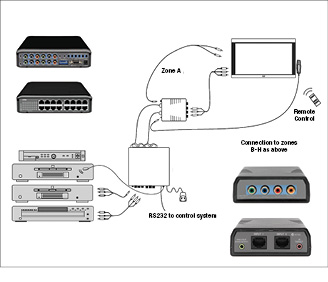The NBN: Beyond the network boundary
The rollout of the National Broadband Network (NBN) is still at the decision-making stage regarding what carrier equipment should be put where.
However, because no firm policy has been made on these issues there is still a ‘wait and see’ attitude.
There has been so much emphasis on this part of the rollout, and on satisfying the requirements, that the industry has not tackled what will happen in the home.
ADVERTISEMENT
Neither have we educated the public on how to get maximum output and full benefits from the NBN rollout. The industry needs to look beyond the network boundary and provide informative, cost-effective solutions for when fibre is at the end user’s doorstep.
And this education needs to start now, so that the public is able to make educated decisions on how to prepare and to what level.
Some may say that there is plenty of time, as the take-up is slow in sites that have been serviced, but more householders will sign up as the rollout gathers momentum. People were of the same opinion and attitude when ADSL came in, but the take-up grew quickly.
Those in the information technology and communications sectors will be among the first to push for structured cabling in the home, given their experience in the commercial sector. This is heading in the right direction, as such groups already understand the benefits.
Developers of residential sites are particularly interested in a solution for homes that offers innovative services and a substantial degree of future proofing. We all can help by providing it.
Fibre to the home can deliver 100Mbps at the network termination device, but without the right equipment or a system to handle such speeds internally, there will be a bottleneck. As the saying goes, a team is only as good as itsweakest player.
So what areas in the home networking scope can we advise the public on? Home networking is the buzz phrase. Over the years it has incorporated the telephone and the TV system, but people are starting to install Cat 5 or Cat 6 in the home in the star topology. This gives the flexibility to make any outlet a phone or a data point.

Figure 2 shows the ideal set up of a home network cabling system that will ensure that you have all bases covered.
As an industry we need to encourage this trend, not only to create a demand for our services or products but also to advise householders that technology will continue to develop and they don’t want to be left behind.
As more home networking equipment is introduced into the market, we note that it is compatible with Cat 5 or Cat 6 cabling, such as IP cameras and TVs with an RJ45 outlet, allowing use as monitors for internet activity.
Then there’s internet protocol TV – which currently works only by being plugged into an Ethernet port on the router or via a network outlet that has been patched – high definition media over structured cabling, white goods hooked up to the network for remote fault finding, and intercom and security systems.
One of the emerging solutions – high-definition AV over structured cabling – highlights the benefits of having a system installed, and Figure 1 shows a relatively easy set-up.
With this type of system you are able to achieve:
• High-definition AV distributed in the home via Cat 5 or Cat 6 unshielded twisted pair cable;
• Infra-red reticulation for control of AV devices from other rooms;
• Full 1080 high-definition picture to all TVs; and
• Distributed high-definition video and audio to eight zones.
Even when a wireless router is to be used, cabling installed during construction allows for several locations where the router will not be an eyesore.
Some houses can even benefit from two wireless routers to provide signal strength in every part of the building, especially in multi-storey dwellings.
But when choosing a wireless router for an NBN cabled property, ensure that it can maximise speed and bandwidth. The benchmark for home networks is a 1Gbps wireless router.
The ideal set-up for a home network cabling system will cover all bases (Figure 2).
With a central location for all cabling to come back to, the best option is an enclosure. This is where all the patching happens, providing a clean and uncluttered room outlet.
Up to now we have been concentrating on structured cabling systems for the home, but the free-to-air TV reticulation system must still run over coaxial cable.
Again the ideal set-up would be to run the coax cabling system to a central location (preferably the same enclosure as the structured cabling), bring the antenna cable to this position and split from that point.
This is recommended for the same reason: keeping all the activity in one space.
The message is clear. If your customers are talking to builders or have started building, give them reason to consider a home network cabling system. They may even come to value it more than the granite benchtop ordered for the kitchen.
A networked system – Cat 5 or 6 structured cabling plus coaxial – already offers great benefits, but when the fibre network arrives the benefits will be even greater.
-
ADVERTISEMENT
-
ADVERTISEMENT
-
ADVERTISEMENT
-
ADVERTISEMENT
